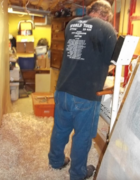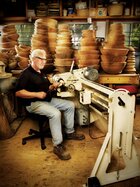Well you divide by 20% to get five segments, then you divide them by 50% to arrive at 10 equal segments.
25mm is 63/64ths (to two places). While ½ an inch is 12.7mm.
I grew up with an imperial system that originated from England in Australia, then in 1965 we started metrication seriously with the building industry adopting millimetres as the standard measure for everything. The idea was to use computational devices (computers), which have issues with fractions, to speed up and reduce overall costs in a big way. It did work and was so spectacular that engineering and the automotive industry did the same and reaped the benefits.
I very quickly switched to metric starting in the late 1960's and by around 1974 I no longer had anything that could measure in inches. At one stage I was in the printing industry for 15 years and learnt about Ens, Ems, Picas and so on. But the really funny thing was that the printing industry in Australia sort of adjusted things to metric, but still used Ens, Ems and so on.
One of my nephews, now very middle aged, was on a rotating 24 hour three shifts per day doing the engineering designs for General Motors. One shift in Australia, which then switched to Germany, which then switched to the USA. This was around 30-35 years ago and everything was metric.
Interesting topic, but maybe we should get back on topic.



